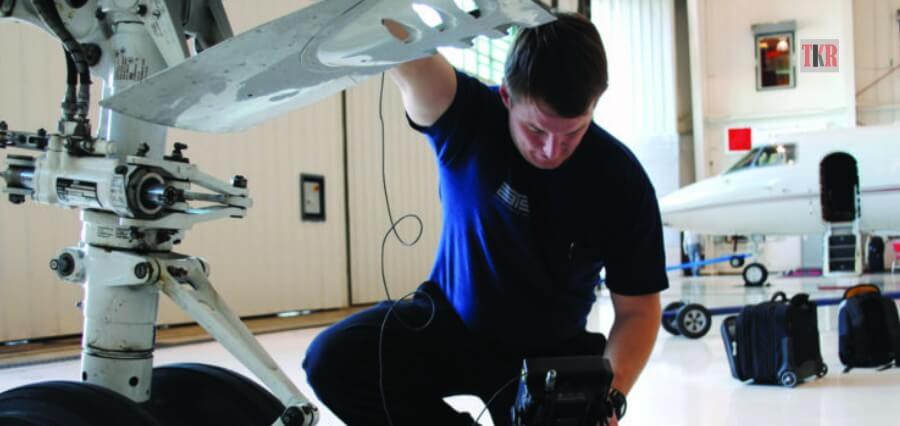Non Destructive Testing (NDT) is a way to detect and analyze the flaws in materials. It is a method of testing that inspects the material without hampering its serviceability. One of the key roles of NDT is to assure the quality of many manufacturing processes.
A destructive test is usually done to check if a batch of material is within specification, that is, to check whether the product has any flaws, etc. The simplest way of testing materials is to test them to destruction, however it is undesirable for large expensive systems. In situations like these, NDT techniques could be used as materials are tested before they are used or during the maintenance programme itself. It also facilitates the testing of materials or parts that are already in use.
NDT is applied in many industries and one such industry is the Aerospace industry. In aerospace, NDT plays a vital role of design, manufacturing and maintenance of the aircraft. As in any transport industry, in the aerospace industry NDT can make a difference between life and death. Aircraft components are tested periodically for any flaws throughout their life as safety is the single most critical aspect.
NDT Methods used in Aerospace
NDT can be split into two areas: surface and sub-surface techniques. There are various methods among these two areas which are used in the aerospace industry. Some of them are:
- Visual Inspection: Visual inspections are one of the oldest and simplest methods of testing. The human eye is said to be the most powerful NDT tool. Special tools like magnifying glasses, mirrors, etc. are used for inspecting more closely. Visual inspection of aircraft for cracks, misalignment, corrosion, etc. is helpful as these are the first sign of problem.
- Radiography: In aerospace, radiography uses both x-rays for thin materials and gamma rays for thick materials. An x-ray generator or radioactive isotope is used as a source of radiation. This radiation is then directed through a part onto a film or any other imaging media. The image generated further shows the defects or damages in the particular part. In aircrafts, even small cracks in the weld prove to be dangerous. Such cracks, gaps, leaks, etc. can be detected through radiography.
- Acoustic Emission Testing: This method of testing is the application of an abrupt force on the object being tested. The results of this test are further analyzed to look for any breakage of the material. It could be said to be a simple test of listening to sounds or using sensors to record the impact of an exterior object. The amount of damage that can happen after an aircraft crashes can be known through this test.
- Leak Testing: Leak testing is an important part of the maintenance and manufacturing of the aerospace industry. Aircrafts require large amounts of liquids and gases to function and so this test serves an important one. The test is done by immersing the test object in liquids to trace any leaks. Some of the simplest leak tests are soap bubble testing and pressure decay.
- Penetrant Testing: It is a quick method that is widely used in aviation to detect any surface defects or structural damages. The test object is coated with a liquid visible dye or fluorescent dye. This liquid once settled in the cracks, dents, flaws, etc. is cleaned. This leaves the penetrated cracks with the dye which flows back out, indicating the cracks or flaws. Liquid penetrant is also a part of cleaning and servicing of parts which are inspected after the cleaning is done.
In aviation, NDT is used in different ways at different stages throughout the products life. During development, researchers may use NDT to develop light weight and flexible materials for the aircraft. In aerospace, NDT is used to ensure the quality of materials before and after the manufacturing. The NDT method has to be carried out in for the aircraft to operate safely during flight. This technique has an advantage over the other inspection methods as it does not alter the material for the purpose of testing.
– Shreevarshita Gupta









